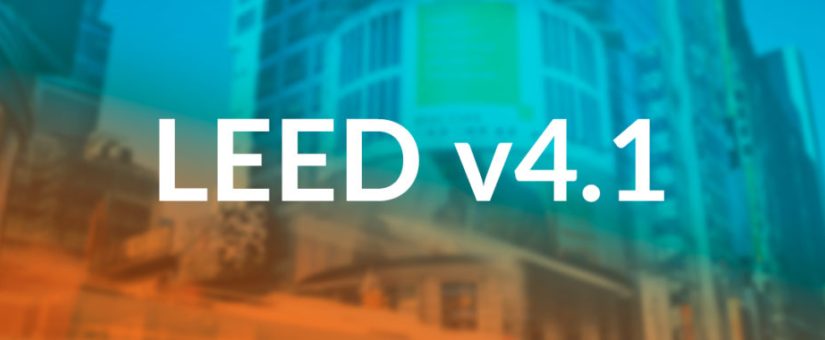
LEED EB:O+M v4.1 BETA GUIDANCE RELEASED
On March 26, 2018, the U.S. Green Building Council (USGBC) released the first beta for LEED v4.1 for Existing Buildings and Spaces. The new version of the LEED EB:O+M has a simplified scorecard and aims to streamline the LEED certification process, while switching to an annual recertification cycle. Previous iterations of the LEED for Existing Buildings rating systems have been on a 5-year recertification cycle. LEED v4.1 builds on the momentum from the LEED Performance Score alternative compliance path in LEED v4, which focuses on the real-time performance of buildings, as opposed to meeting a series of prescriptive measures of previous versions. Below are some high-level takeaways from the newly released version. Building owners still have the choice to pursue the traditional LEED EB:O+M v4 certification pathway, but this will not utilize the Arc platform.
One Certification Path
LEED v4.1 has shifted to an entirely performance-based path. In the previous version of LEED EB:O+M (v4), project teams were able to choose to either follow a prescriptive path, one that teams may be most familiar with, or follow the performance path. Many of the previously available credits from LEED v4 have been included as Base Points in LEED v4.1, which can contribute to a project’s score over its lifespan.
Certification Now Available for Existing Interiors
Marking a major shift for the LEED EB:O+M program, interior spaces are now eligible to seek LEED certification for an existing space. This LEED EB:O+M v4.1 certification is treated as a first-time certification, and is separate from any LEED for Commercials Interiors certifications. Following the same criteria as existing buildings, interior spaces can track and report their performance in energy, water, waste, transportation and human experience. To determine consumption values, interior space projects can either install submeters on all energy and water sources, or prorate the building’s total consumption for the project space based on occupancy.
LEED v4.1 Scoring System
The updated scoring system within LEED v4.1 measures, monitors, and reports real-time performance scores for buildings and interior spaces, allowing occupants to visually understand the building’s overall performance. Individual scores are produced for each of the following six metrics:
ENERGY
The previous twelve months of consecutive energy use is entered into the LEED Performance Score portal. Energy use includes all utility types, including data from electric, steam, natural gas, and more.
WATER
The previous twelve months of water consumption data is entered into the Performance Score portal.
WASTE
The tonnage of diverted and landfilled waste is entered monthly into the LEED Performance Score portal, and points are awarded to the building based on the building’s annual waste division rate and total tons of waste generation.
TRANSPORTATION
A transportation survey will need to be conducted at the building to confirm the percentage of tenants that use alternative transportation. A minimum number of each building’s occupants must take the survey to earn any points. The average carbon footprint of the commuting behavior is compared against the USGBC data set, determining the points awarded.
HUMAN EXPERIENCE
Human experience is rated on two factors: occupant comfort, and indoor air quality. Air quality testing will need to be performed on an annual basis to assess the air quality in CO2 and Total Volatile Organic Compounds. Additionally, an occupant comfort survey must be conducted each year in order to determine the exact number of points earned in this category.
BASE POINTS
The project teams can also pursue various base points to add to the total project score. Base points may be earned by achieving a select group of the credits listed below. Once base points are awarded, they continue to contribute to the project’s overall score and are not subject to variation year-over-year like the above credit categories.
- Rainwater Management
- Heat Island Reduction
- Light Pollution Reduction
- Site Management
- Grid Harmonization (formerly Demand Response)
- Enhanced Refrigerant Management
- Purchasing
- Green Cleaning
- Integrated Pest Management
- Innovation
Next Steps for LEED V4.1
It’s important to note that this rating system is currently in beta and is now open for proposals on recommended changes before it becomes finalized. Additional details on LEED V4.1 and beta guidance can be found here. Please also reach out to CodeGreen for more information on this new LEED certification option.


